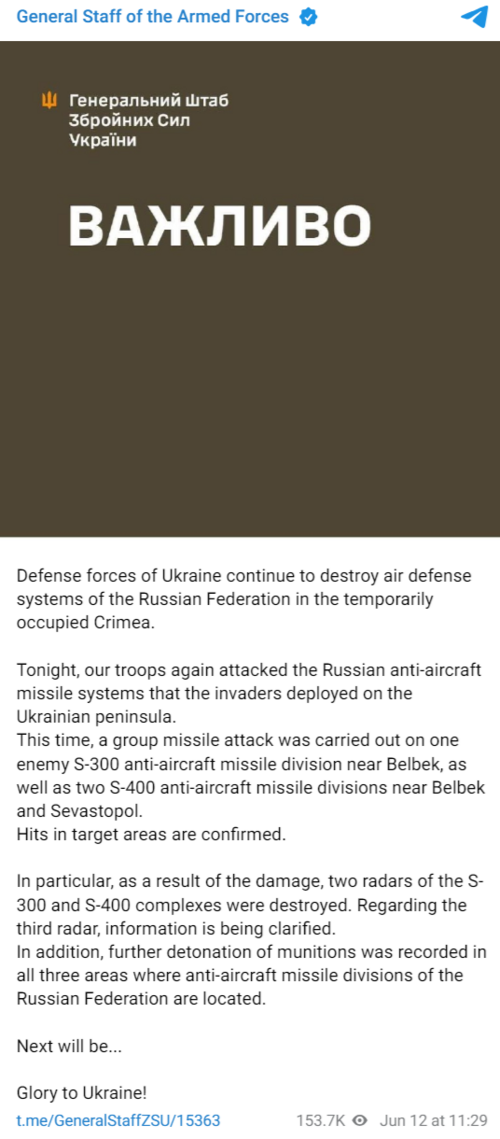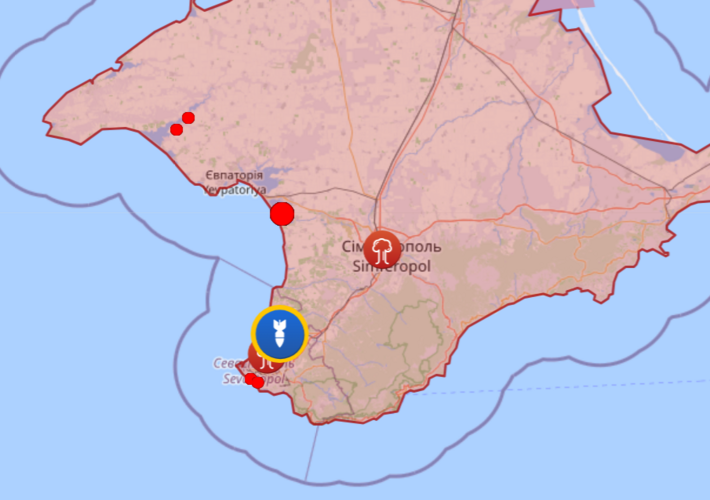You are using an out of date browser. It may not display this or other websites correctly.
You should upgrade or use an alternative browser.
You should upgrade or use an alternative browser.
Almaz-Antey S-400 Triumph / SA-21 Growler TABM/SAM
- Thread starter Woody
- Start date
Scott Kenny
ACCESS: USAP
- Joined
- 15 May 2023
- Messages
- 11,427
- Reaction score
- 13,936
Or just being a right evil cheeky bastard and putting half an MLRS load spamming the battery and then sending the second half of that load a couple minutes later to get the battery.Spamming the SA-21 battery would ensure it wastes a lot of expensive interceptor missiles making it easier to destroy if there's a follow up HIMARS barrage.
Then having said MLRS unit(s) drive like hell because counterbattery fire is a witch.
Forest Green
ACCESS: Above Top Secret
- Joined
- 11 June 2019
- Messages
- 9,421
- Reaction score
- 17,161
aonestudio
I really should change my personal text
- Joined
- 11 March 2018
- Messages
- 2,962
- Reaction score
- 7,475
An upgraded S-400 battery just got destroyed by an ATACAMs strike yesterday.
Russians claim five were used, but they are known for overclaiming. What video and pictures we have doesn’t seem to support that many as well.
Same Russian source claimed the entire crew survived, which seems extremely unlikely given the destruction of the command vehicle. They might have been being sarcastic or something, dunno.
Most interestingly it was using a deployed 96L6-Tsp radar, which they previously claimed has significant upgraded anti-ballistic capability and is also utilized as the radar for the S-350 and S-500 systems. This is the first time it has been confirmed destroyed.
In addition two TEL were completely destroyed, third was likely destroyed but at least heavily damaged and both the radar and command vehicle were destroyed as well.
It doesn’t seem like any of its current missiles are particularly effective vs ATACAMs.
Russians claim five were used, but they are known for overclaiming. What video and pictures we have doesn’t seem to support that many as well.
Same Russian source claimed the entire crew survived, which seems extremely unlikely given the destruction of the command vehicle. They might have been being sarcastic or something, dunno.
Most interestingly it was using a deployed 96L6-Tsp radar, which they previously claimed has significant upgraded anti-ballistic capability and is also utilized as the radar for the S-350 and S-500 systems. This is the first time it has been confirmed destroyed.
In addition two TEL were completely destroyed, third was likely destroyed but at least heavily damaged and both the radar and command vehicle were destroyed as well.
It doesn’t seem like any of its current missiles are particularly effective vs ATACAMs.
We do not know the conditions of the engagement. It is possible other rockets and decoys were used. Ukraine is known to mix HIMARS and ADM-160s into their ATACM strikes.
We don’t know the exact conditions but the Russian milblogger who published photos is claiming five ATACAMS. It’s also clear it wasn’t a saturation attack as the TEL’s still had ammo left. MALD’s should not serve as effective decoys for ballistic missiles vs a modern AESA, though vs Russia, who knows.
We don’t know the exact conditions but the Russian milblogger who published photos is claiming five ATACAMS. It’s also clear it wasn’t a saturation attack as the TEL’s still had ammo left. MALD’s should not serve as effective decoys for ballistic missiles vs a modern AESA, though vs Russia, who knows.
Anything flying into occupied airspace is still a threat and target.
aonestudio
I really should change my personal text
- Joined
- 11 March 2018
- Messages
- 2,962
- Reaction score
- 7,475
- Joined
- 23 August 2011
- Messages
- 1,603
- Reaction score
- 4,740
There is no-one going to purchase an S-400 system after that video.....
Alert, firing missiles at the threat.....still annihilated.
- Joined
- 23 August 2011
- Messages
- 1,603
- Reaction score
- 4,740
No doubt Turkey will be looking to very quietly sell its SA-21 batteries to Ukraine.
Wonder if the Indian's will be that upset if further deliveries are delayed....they might be able to cancel the contract...
According to one Ukrainian source, two ATACAMS were fired and one was shot down while the other was clearly very effective.
However, do you want to know the craziest thing?
The aftermath footage and destruction video seems like it might be from two different incidents based on geolocation, if accurate.
So probably two separate S400 batteries destroyed via ATACAMs over the last couple of days.
However, do you want to know the craziest thing?
The aftermath footage and destruction video seems like it might be from two different incidents based on geolocation, if accurate.
So probably two separate S400 batteries destroyed via ATACAMs over the last couple of days.
Last edited:
So probably two seperate S400 batteries destroyed via ATACAMs over the last couple of days.
So indicating that in this case the MGM-140 has an SSKP of 1.0.
Forest Green
ACCESS: Above Top Secret
- Joined
- 11 June 2019
- Messages
- 9,421
- Reaction score
- 17,161
It looks intimidating but it doesn't really do much, it's sort of like a scarecrow for planes.
Last edited:
- Joined
- 3 June 2011
- Messages
- 18,305
- Reaction score
- 12,130
Forest Green
ACCESS: Above Top Secret
- Joined
- 11 June 2019
- Messages
- 9,421
- Reaction score
- 17,161
Cluster munitions again proving their unreplaceable value. Two conclusions from this war - drones are now very important and cluster munitions are still important and need to be re-introduced to military procurement thinking. GPS-immunity or just use cluster munitions?
Last edited:
Forest Green
ACCESS: Above Top Secret
- Joined
- 11 June 2019
- Messages
- 9,421
- Reaction score
- 17,161
Prized Russian Long Range Radar System Attacked In Eastern Ukraine

Prized Russian Long Range Radar System Attacked In Eastern Ukraine
The potential loss of a Nebo-M radar system would hamper Russia's ability to detect and track aerial threats, including ballistic missiles.
aonestudio
I really should change my personal text
- Joined
- 11 March 2018
- Messages
- 2,962
- Reaction score
- 7,475
Forest Green
ACCESS: Above Top Secret
- Joined
- 11 June 2019
- Messages
- 9,421
- Reaction score
- 17,161
Looks like jamming has not rendered GPS 'completely ineffective' after all. GL-SEAD has proved extremely effective during this conflict too.
Last edited:
Looks like jamming has not rendered GPS 'completely ineffective' after all.
Don't forget that there are a range of terminal-homing seekers available for the JDAM and SDB for example that will home in on anti-GPS jammers.
Forest Green
ACCESS: Above Top Secret
- Joined
- 11 June 2019
- Messages
- 9,421
- Reaction score
- 17,161
Preliminary data:
At night, the Defense Forces of Ukraine hit the S-400 anti-aircraft missile systems in the Dzhankoya region, as well as 2 S-300 divisions near Chornomorskyi and Yevpatoria, on the still-occupied peninsula.
View: https://www.youtube.com/watch?v=f7xPsTiPzkc

Dzhankoi lit up on FIRMS.
View: https://x.com/UKikaski/status/1800163097434353917
Fedosia also lit up on FIRMS.
View: https://x.com/UKikaski/status/1800167939372429635
At night, the Defense Forces of Ukraine hit the S-400 anti-aircraft missile systems in the Dzhankoya region, as well as 2 S-300 divisions near Chornomorskyi and Yevpatoria, on the still-occupied peninsula.

Dzhankoi lit up on FIRMS.
View: https://x.com/UKikaski/status/1800163097434353917
Fedosia also lit up on FIRMS.
View: https://x.com/UKikaski/status/1800167939372429635
Forest Green
ACCESS: Above Top Secret
- Joined
- 11 June 2019
- Messages
- 9,421
- Reaction score
- 17,161
Appears so:So another horribly expensive and difficult to replace SA-21 battery has been destroyed?
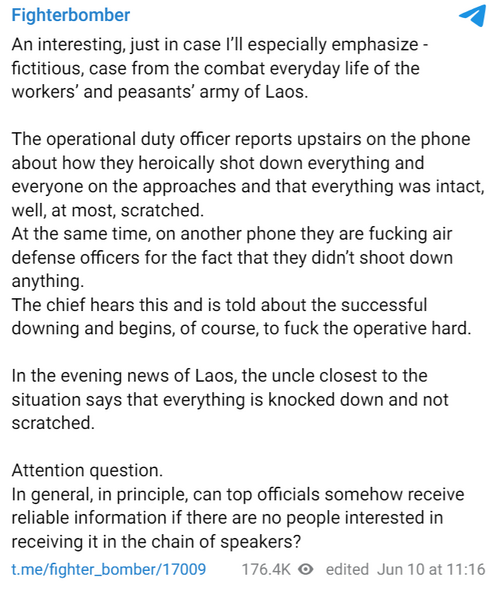
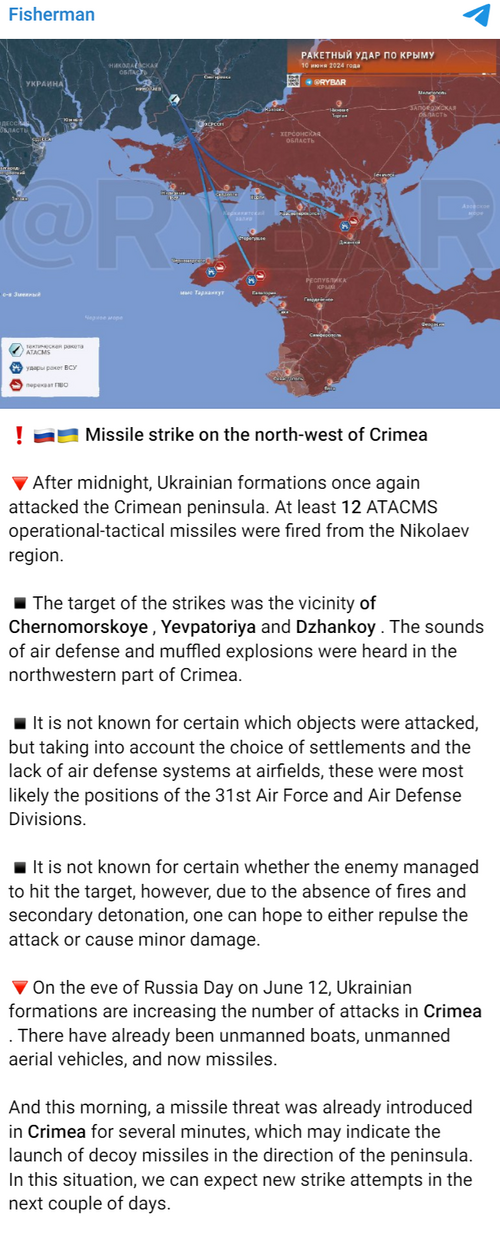
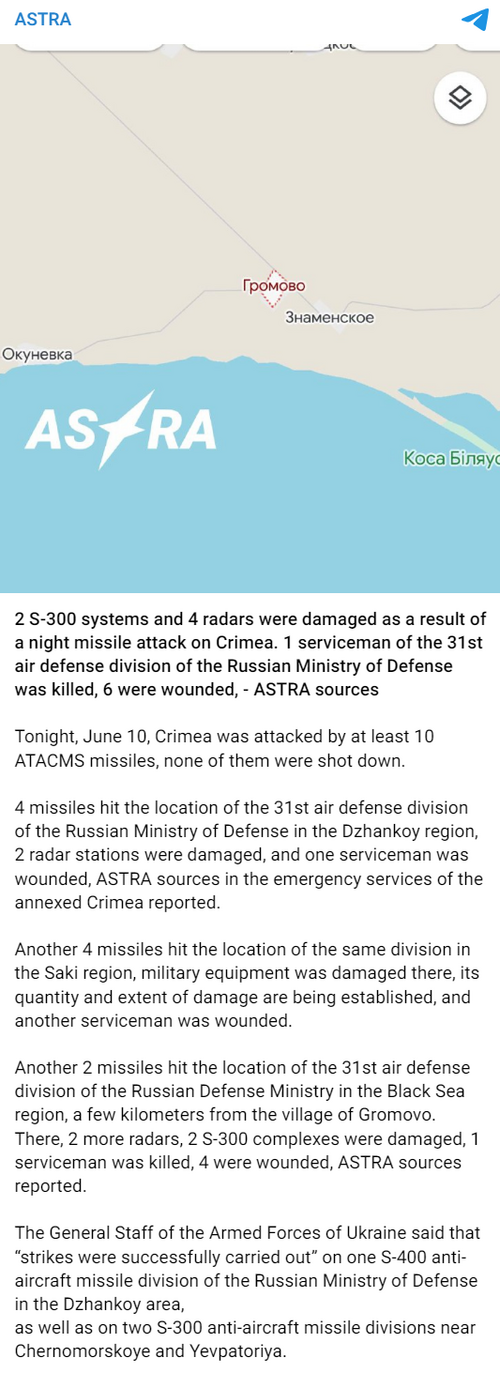
View: https://www.youtube.com/watch?v=1hhfIa60Wuc
Last edited:
- Joined
- 23 August 2011
- Messages
- 1,603
- Reaction score
- 4,740
Just in case anyone is confused....the Workers and Peasants Army of Laos (and also the 'Kyrgyz Republic') is Russian Blogger's code for the Russian Armed Forces, to prevent themselves falling foul of laws about denigrating the Russian military....
Forest Green
ACCESS: Above Top Secret
- Joined
- 11 June 2019
- Messages
- 9,421
- Reaction score
- 17,161
A thread about part of that hit:
View: https://x.com/Osinttechnical/status/1801391898344456700
The 92N6 Grave Stone radar, generator unit, and one 51P6 TEL were destroyed by the ATACAMs strike.
View: https://x.com/Osinttechnical/status/1801391898344456700
The 92N6 Grave Stone radar, generator unit, and one 51P6 TEL were destroyed by the ATACAMs strike.
Scott Kenny
ACCESS: USAP
- Joined
- 15 May 2023
- Messages
- 11,427
- Reaction score
- 13,936
With modern data links, it's almost more important to get the TELs than the radars...The 92N6 Grave Stone radar, generator unit, and one 51P6 TEL were destroyed by the ATACAMs strike.
Forest Green
ACCESS: Above Top Secret
- Joined
- 11 June 2019
- Messages
- 9,421
- Reaction score
- 17,161
Debatable, not everyone has IBCS-equivalent and a radar is usually way more expensive and difficult to replace, and also serves many TELs.With modern data links, it's almost more important to get the TELs than the radars...
Scott Kenny
ACCESS: USAP
- Joined
- 15 May 2023
- Messages
- 11,427
- Reaction score
- 13,936
The S400s do have a comparable networking system where a radar not in the same grid square as the TELs can tell those TELs when to fire.Debatable, not everyone has IBCS-equivalent and a radar is usually way more expensive and difficult to replace, and also serves many TELs.
So while blinding the TELs is good for short term suppression, you need to get the TELs as well as the radars for permanence.
The radar is still the harder to replace item. Control center perhaps more so. Destroying any part of an opponent SAM system is desirable to prevent reconstituting batteries.With modern data links, it's almost more important to get the TELs than the radars...
Forest Green
ACCESS: Above Top Secret
- Joined
- 11 June 2019
- Messages
- 9,421
- Reaction score
- 17,161
There's way more TELs than there are radars and the TELs are relatively very cheap and easy to replace. The easiest way to disable SAMs is the killing the radars and ground stations. Keep the radars out permanently and you have permanence. Killing TELs as well uses more munitions and is therefore not as efficient. Of course, if your cluster warhead takes out a TEL or two as well as the radar and ground station, then that's not something to complain about... not for you anyway.The S400s do have a comparable networking system where a radar not in the same grid square as the TELs can tell those TELs when to fire.
So while blinding the TELs is good for short term suppression, you need to get the TELs as well as the radars for permanence.
Scott Kenny
ACCESS: USAP
- Joined
- 15 May 2023
- Messages
- 11,427
- Reaction score
- 13,936
And the modern data links make it so that pretty much any radar and control center can give launch orders to any TEL.The radar is still the harder to replace item. Control center perhaps more so. Destroying any part of an opponent SAM system is desirable to prevent reconstituting batteries.
Gotta kill them all these days, not just take out radars and/or control centers at each battery.
That's what the russians claim anyway, but they're still removing most of their AD umbrella from Crimea after losing so many systems.And the modern data links make it so that pretty much any radar and control center can give launch orders to any TEL.
Gotta kill them all these days, not just take out radars and/or control centers at each battery.
I think that just like with many russian pieces of gear, the claims are bigger than the performance.
And the modern data links make it so that pretty much any radar and control center can give launch orders to any TE
Those datalinks can be disrupted if they're wireless by electronic jamming.
Scott Kenny
ACCESS: USAP
- Joined
- 15 May 2023
- Messages
- 11,427
- Reaction score
- 13,936
I'd still just as soon treat the claims as true for planning on how much destruction it's going to take to degrade the AA performance.I think that just like with many russian pieces of gear, the claims are bigger than the performance.
Bunko's Battlegrounds has put out a video about why Ukraine is attacking SA-21 batteries and why they can't seem to stop ATACMS missiles:
This video will explain why attacks on S-400 became more numerous. Why the focus on Crimea? What might be the ultimate goal? And why have Russian S-400 SAMs often showed to be inadequate to protect themselves?
Similar threads
-
-
-
Soviet/Russian long range sam projects
- Started by World B4
- Replies: 0
-
-

